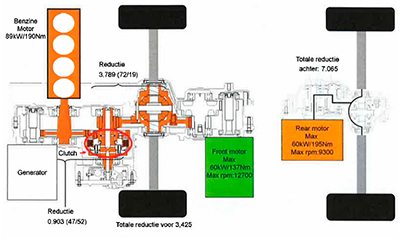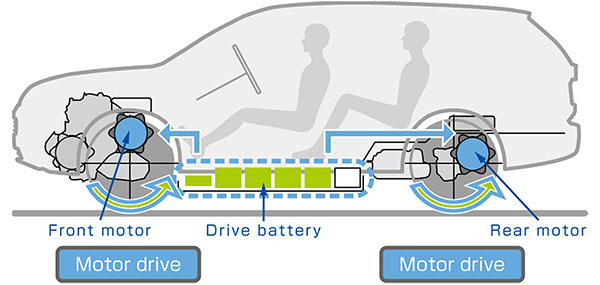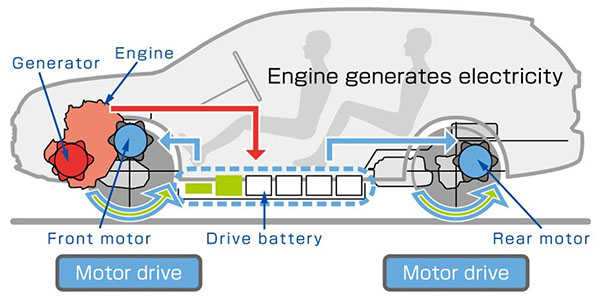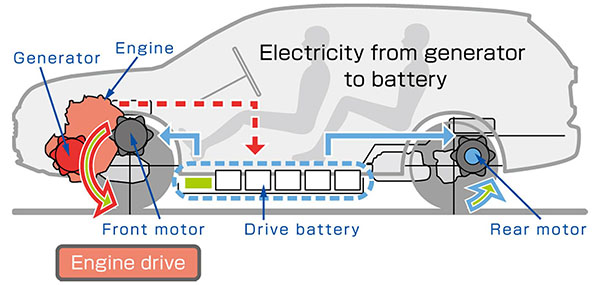|
Eugenio,77
Addendum to the article: "Typology of Japanese hybrids" The plug-in series-parallel hybrid from Mitsubishi was introduced in 2013. The front powertrain consists of a fixed-ratio transmission, generator, traction electric motor, and a mechanism for direct drive of the front wheels from the internal combustion engine (ICE). The rear wheels are driven by a separate electric motor.
The system operates in three main modes: 1) EV Drive Mode The front and rear wheels are powered by electric motors, which are supplied by the battery.
2) Series Hybrid Mode If the battery charge drops below a set value, sudden acceleration is required, or there is increased load, the ICE is used to drive the generator. The wheels are still driven by the electric motors.
3) Parallel Hybrid Mode At high speeds, the ICE is more efficient than the electric motors, so direct mechanical wheel drive from the engine is used, while the electric motors provide auxiliary power boost if necessary.
- Can the "30-minute" power data be found? Yes, Mitsubishi models with the PHEV system were supplied to the European market, so the value of 30-minute power is known from registration data and manufacturer specifications. - Can the "rated" power data be found? Yes, the manufacturer specifies nominal power (定格出力) in the specifications for the Japanese market, which corresponds to the values of 30-minute power for European market models. - Can ICE and motor power values be summed? Yes, Mitsubishi PHEV is a series-parallel hybrid. There is a mode of operation in which the ICE has a mechanical connection to the wheels. The manufacturer specifies the total power values in the documentation for PHEV models. Moreover, the sum of ICE power and 30-minute electric motor power values is usually lower than these calculated values provided by the manufacturer. As a result, using the principle of adding power to determine the tax base for Mitsubishi PHEV models is highly justified and fair.  Mitsubishi PHEV GG2W (2013-2018)
 Mitsubishi PHEV GG3W (2018-2021)
 Mitsubishi Outlander PHEV GN0W (2021-)
 Mitsubishi Eclipse Cross PHEV GL3W (2020-)
HEV typology : Toyota HSD ·
Daihatsu e-Smart ·
Honda i-MMD (e:HEV) ·
Toyota Hybrid :
E-Four ·
THS-C ·
HEV trans ·
BEV/FCEV ·
HEV trucks
|
|





